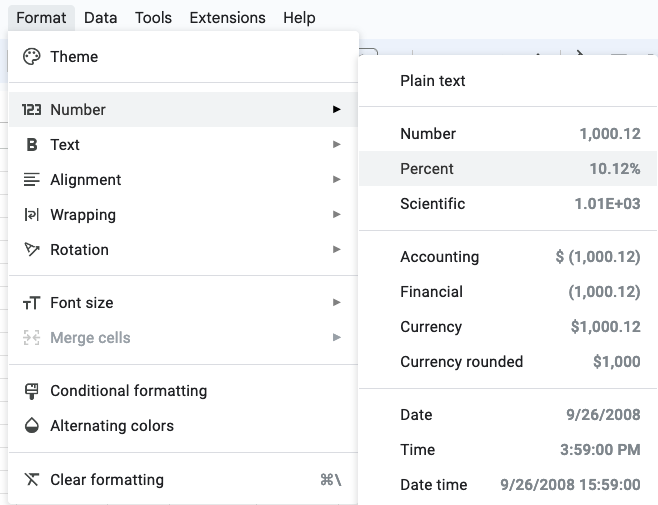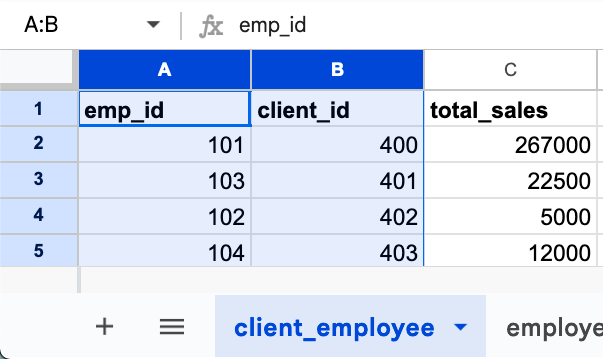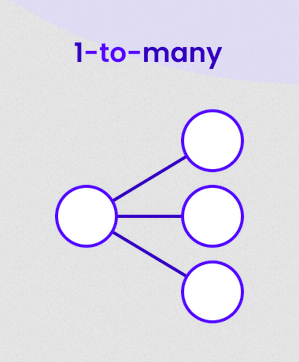Relational Databases and SQL
Terminology
- Relational Database
- Data organized into one or more tables of columns and rows, with a unique key identifying each row.
- Relation
- A relationship between two columns in one or more tables. Relations can be one-to-one, one-to-many or many-to-many.
- SQL
- Structured query language (SQL) is a standard language for database creation and manipulation.
Relational Databases
Fancy Google Sheets
Sheet names → Entities (tables)

Entities (table names) are the nouns that are described by the columns in a table.
Columns → Attributes

Attributes describe the individual aspects of a particular Entity and are usually just called columns.
Rows → Records

Records are the actual data that are described by the data in each column. These are often called rows.
Cell Format → Data Type

Every column has a data type defined when it's created.
Naming conventions
Table and Column names should:
- be lowercase
- use underscores instead of spaces
- be singular instead of plural
- not begin with a number
Constraints
Added for data integrity
Primary Key

Primary keys uniquely identify each Record in a Table. By convention, the primary key of a table is named id.
Compound Primary Key

A Compound Primary Key uniquely defines a table row with a combination of two primary/foreign keys.
By convention, these tables are named by the two joining table names, separated by an underscore.
Foreign Key

Foreign keys create a column relationship between two tables.
By convention, column names with foreign key relationships end in _id.
Check Constraints
When a column has a limited range of allowed values.
Not NULL
When a column cannot be empty.
Unique
When each value in a table column must be unique.
Default
When a default column value is defined if one is not provided when a row is created or updated.
Relations
Types of Foreign Key Relationships
One-to-Many

Entity A belongs to one Entity B but Entity B can belong to many Entity A.
Example: A country can have many cities but a city can only be in one country.
Many-to-Many

Entity A belongs to many Entity B and vice versa.
Example: A movie can have many actors and an actor can be in many movies.
One-to-one (rare)

One-to-one relationships are rare but are sometimes used in more advanced "super/subtype" data model architectures.
SQL
Structured Query Language
Common SQL Commands
The most common SQL statements follow traditional CRUD Operations:
Create → INSERT
Retrieve → SELECT
Update → UPDATE
Delete → DELETE
Create → INSERT INTO
Insert data into all columns of a table:
INSERT INTO
table_name
VALUES
(value1, value2, value3, ...); Example
Insert data into specific columns of a table:
INSERT INTO
table_name (column1, column2, column3, ...)
VALUES
(value1, value2, value3, ...); Retrieve → SELECT
Select specific columns from all rows from a table:
SELECT
column1, column2, ...
FROM
table_name; Examples
SELECT first_name, last_name FROM customer
SELECT first_name, last_name FROM customer;SELECT all columns FROM customer with *:
SELECT * FROM customer;SELECT with WHERE
Select from specific rows with WHERE
SELECT
column1, column2, ...
FROM
table_name
WHERE
condition;Example
Find all fields for anyone with a last name of 'Packe':
SELECT * FROM customer WHERE last_name = 'Packe';SELECT with ORDER BY
Order the rows returned with ORDER BY:
SELECT
column1, column2, ...
FROM
table_name
WHERE
condition;
ORDER BY
column1, column2 ASC|DESCExample
Find all customers by last name, starting at Z:
SELECT id, first_name, last_name FROM customer ORDER BY last_name DESCUpdate → UPDATE
Update a row using SET and WHERE:
UPDATE
table_name
SET
column1 = value1, column2 = value2, ...
WHERE
condition; Example
Update the last name of customer 4 to "Marcias":
UPDATE customer SET last_name = 'Marcias' WHERE id = '4' Delete → DELETE
Delete rows with WHERE (we rarely delete rows in production):
DELETE FROM
table_name
WHERE
condition; Example
Delete all records that total more than 1000 (then get fired):
DELETE FROM rental_invoice WHERE total_amount_payable > 1000; Further Reading
Videos
- IBM Technology: What is a Relational Database?
- Free Code Camp: SQL Tutorial - Full Database Course for Beginners
- [2:36] - What is a Database?
- [23:10] - Tables & Keys
- [43:31] - SQL Basics